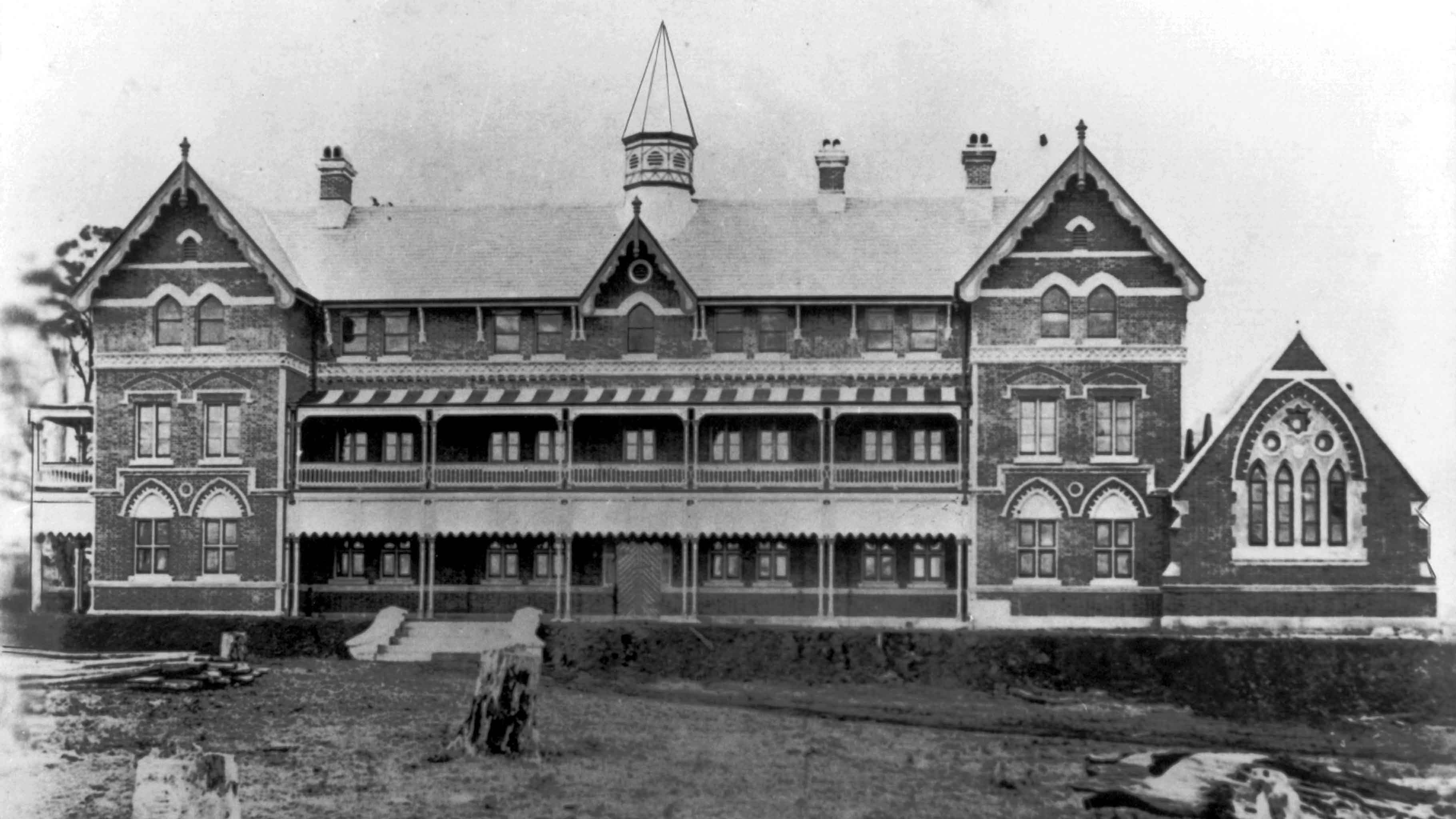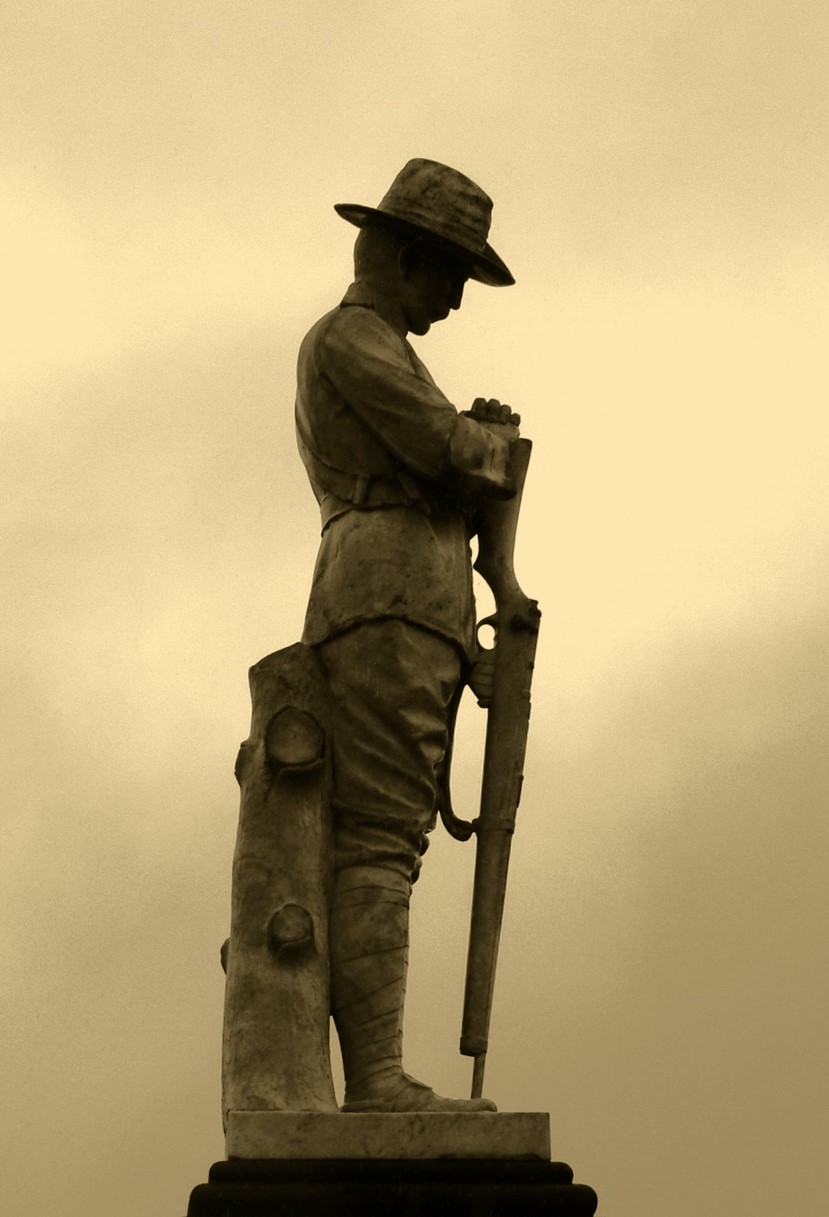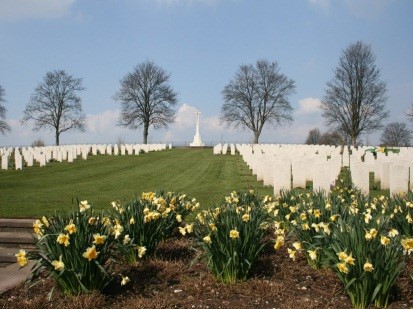Flight Sergeant John William James Buckland, the son of William Buckland and Emily Phyliss Buckland (nee O’Keefe), was born at Toowoomba in Queensland on 6th June 1923. He was educated at the Good Samaritan Convent during the years 1935-1936 and at the Toowoomba Grammar School during the years 1937-1939 where he passed the Junior Public Examination in eight subjects. Whilst a student at the school, he served for two years in Cadets. After leaving school he entered employment with the Toowoomba City Council as a Clerk. He applied for aircrew training in the Royal Australian Air Force on 30th January 1942. He was enrolled in the Reserve of the R.A.A.F. after swearing an oath of allegiance on 31st March 1942.
Flight Sergeant John Buckland, at the age of 19 years and 4 months was enlisted into the Citizen Air Force of the R.A.A.F. at No. 3 Recruiting Centre in Brisbane on 8th October 1942 after giving an undertaking that he would serve for the duration of the war and an additional twelve months. At the time of enlistment he was unmarried, employed as a Bank Clerk and residing at 18 Phillip Street in Toowoomba. His physical description was that he was 5 feet 9 inches in height and weighed 126 pounds. He had a medium complexion, brown eyes and black hair. He stated that he was of the Roman Catholic religion. He gave his next of kin as his father, Mr William Buckland, c/- McLeods Store, Cnr. Ruthven & Russell Streets, Toowoomba. He also gave a Mrs H. Griffiths, 9 Ipswich Street, Toowoomba as a person to be notified in the event of injury or death.
Flight Sergeant John Buckland was allotted the service number of 429495 and he joined No. 2 Initial Training School at Lindfield in New South Wales on 18th October 1942 where he learnt the basics of service life. He joined No. 8 Elementary Flying Training School at Narrandera in New South Wales on 4th February 1943. He joined No. 1 Bombing & Gunnery School at Evans Head in New South Wales on 29th April 1943. After completing his course at Evans Head he was awarded the Air Gunner Qualification Badge and promoted to the rank of Temporary Sergeant on 27th May 1943. He joined No. 3 Embarkation Depot at Sandgate on 6th June 1943 and on 12th June 1943 he joined No. 2 Embarkation Depot at Bradfield Park in Sydney to prepare for service overseas on attachment to the Royal Air Force. He embarked from Brisbane on 18th June 1943 and disembarked in England on 31st July 1943. He joined No. 11 Personnel Despatch & Reception Centre at Brighton on 1st August 1943. He joined No. 14 Operational Training Unit at Royal Air Force Station Cottesmore on 24th August 1943 for training in night bombing. He joined No. 51 Base at Royal Air Force Station Scampton on 30th November 1943 and was attached to the Battle School during the period 30th November until 29th December 1943. He had been promoted to the rank of Temporary Flight Sergeant on 27th November 1943.
He was then attached to No. 1661 (Heavy) Conversion Unit at Royal Air Force Station Winthorpe during the period 29th December 1943 until 15th January 1944 and then to 1660 Conversion Unit at Royal Air Force Station Swinderby during the period 15th January until 14th February 1944. He then attended the Lancaster Finishing School at Royal Air Force Station Syerston where Air Gunners developed air-to-air gunnery skills during the period 14th February until he joined No. 207 Squadron Royal Air Force on 10th March 1944.
Flight Sergeant John Buckland was an Air Gunner and a member of the crew of a No. 207 Squadron Royal Air Force Lancaster Bomber LM 436 was lost on air operations on the night of 30th/31st March 1944. The aircraft took off at 22.11 hours from Royal Air Force Station, Spilsby, Lincolnshire, for a bombing raid on Nuremberg, Germany. The Air Ministry advised his father, H.A. Buckland, whose business address was c/- McLeod’s Store, Ruthven Street, Toowoomba and Mr H.A. Griffiths at 9 Ipswich Street, Toowoomba, that he was missing on air operations. The International Red Cross Office subsequently received information from German sources that his aircraft was shot down at 0030 hours near Freiensteinau in the District of Lauterbach and that it exploded on contact with the earth. The German source also advised that only two bodies were recovered and that the two men were buried on 1 April 1944 in the churchyard of Freiensteinau. The one crew member was identified as Sergeant Jones and the other crew member was unable to be identified.
Subsequent investigations were carried out after the war by No. 3 Missing Research and Enquiry Unit into the fate of the seven crew members of Lancaster LM 436 and the following report on the outcome of the investigations was submitted by Squadron Leader J.H. Sanderson:
Following your instructions I proceeded to Freiensteinau to investigate. I have interviewed several people including the Burgermeister and his secretary, but the former Burgermeister, L. August, gave me the most coherent information. He stated that about 01.30 hours on 31st March 1944 a stream of 4 engined bombers was flying over the woods about half a mile north of the village when they were attacked by ME 109’s and a fierce battle took place. He observed one British bomber which he later recognised as a Lancaster catch on fire and crash on the edge of the woods. It dug a deep crater and the bombs, fuel and ammunition all exploded causing a blaze that set the forest on fire. Parts of the aircraft and of bodies were found 400 yards from the impact. He proceeded to the scene of the crash with the local constable and saw two dead men lying clear of the aircraft. It is not known if they were thrown out, or if they tried to bail out too low. Although exhaustive searches were carried out by the German Army, who removed the wreck, no further bodies or evaders could be found.
The two dead were identified by a German Army doctor as 2211337, Sergeant Jones and 34291 – Officer –MEEB. It is not known how they found the latter name. Mr August himself found many very small bits of human bodies, a scalp with hair, the traces of flesh on a radiator which suggests that a man was blown by the force of the explosion clear through it. The local inhabitants collected many pieces of bodies and threw them into the crater. To illustrate the force of the explosion Mr August explained that he found bits of the tyre, almost blown to atoms, 300 yards from the crater. The burial of the two men took place on April 2nd. They were buried by another Burgermeister in the local cemetery without a coffin. The plot is well kept, and the grave is marked by a black wooden cross, covered by a little roof and inscribed in white letters: “Hier Ruhen zwei Englische Soldaten”.
An inspection of the crater yielded no clues. Only a propeller blade and a very few bits of metal are still there. I should like to point out that the aircraft did not break formation until it was attacked over this village. This would appear to eliminate the possibility that some members of the crew may have bailed out before, and there is no doubt in my mind that the bodies of the remaining five members were torn to pieces at the scene of the crash. Please send further instructions regarding exhumation if considered necessary.
When the two bodies were exhumed for concentration into the Hanover War Cemetery the identity of the unknown person buried with Sergeant Jones was positively identified as that of Flight Sergeant John Buckland. The body was wearing a shirt bearing a label Made in Australia with the number 429495 on it. Also the body was wearing an electrically heated flying suit usually worn by Air Gunners. This confirmed that the unidentified body buried with Sergeant Jones was that of John Buckland. His remains were finally laid to rest in the Hanover War Cemetery in Germany. His headstone in the Hanover War Cemetery contains the family inscription “His Duty Nobly Done. Always Remembered”. Mr Buckland was advised of the locating of his son’s body in the following letter sent to him by the Casualty Section in August 1947:
I refer to previous communications concerning your late son, Flight Sergeant John William James Buckland, and now advise that a further report has been received from the Missing, Research and Enquiry Unit operating in Germany. The report states that further investigation disclosed that your son was interred at Freiensteinau and was one of the deceased crew members whose body was recovered near the scene of the crash. In my letter to you dated the 11th July 1947, it was stated that it was only possible to recover the bodies of two crew members, and at that time it was thought that your son was one of the members whose remains were not recovered. However, following exhumation, the identification of your son was positively established. The remains of your son have now been reinterred in Plot D, Row 5, Grave No. 16, of the Military Cemetery at Hanover, Germany. A temporary cross has been erected over the grave and at a later date it will be replaced by a permanent headstone to be erected by the Imperial War Graves Commission which will then care for and maintain the grave in perpetuity. Permit me to assure you once again of the sincere sympathy of this Department in the great loss which you have suffered. Yours faithfully, M.C. Langslow, Secretary.
His name is recorded on Panel No. 119 at the Australian War Memorial in Canberra and locally on the Toowoomba Grammar School World War 2 Honour Board.
Photo and Text: Sergeant Jack Buckland, only son of Mr W. Buckland and the late Mrs Buckland, of Ruthven Street, Toowoomba, who is serving with the R.A.A.F. overseas.
Note
A detailed account of this disastrous raid in which 96 bombers were lost can be found in Martin Middlebrook’s book, “The Nuremberg Raid – 30-31 March 1944”. Cassell & Company, London. 1980.
Toowoomba Grammar Records show he enrolled as a boarder on 27th January 1937 and left on 1st December 1939. He passed 8 subjects in the Junior examination. His parent is shown as William Buckland, c/- McLeods Store, Ruthven Street, Toowoomba. He was residing at 129 Mary Street Toowoomba and employed as a Junior Clerk at Toowoomba Foundry and Toowoomba Council.




